The exhibition presents a new iteration of The Palestinian Museum of Natural History and Humankind; Rabah’s ongoing inquiry into the ways in which history is socially constructed through material embedded in identity and culture.

Founded in 1995, and taking the historical and geopolitical context of Palestine as a point of departure, the Museum is an institution that produces and presents artifacts and artworks dating from prehistory to the present day. This ambitious long- term project sets out to disrupt iconic representations of Palestine.
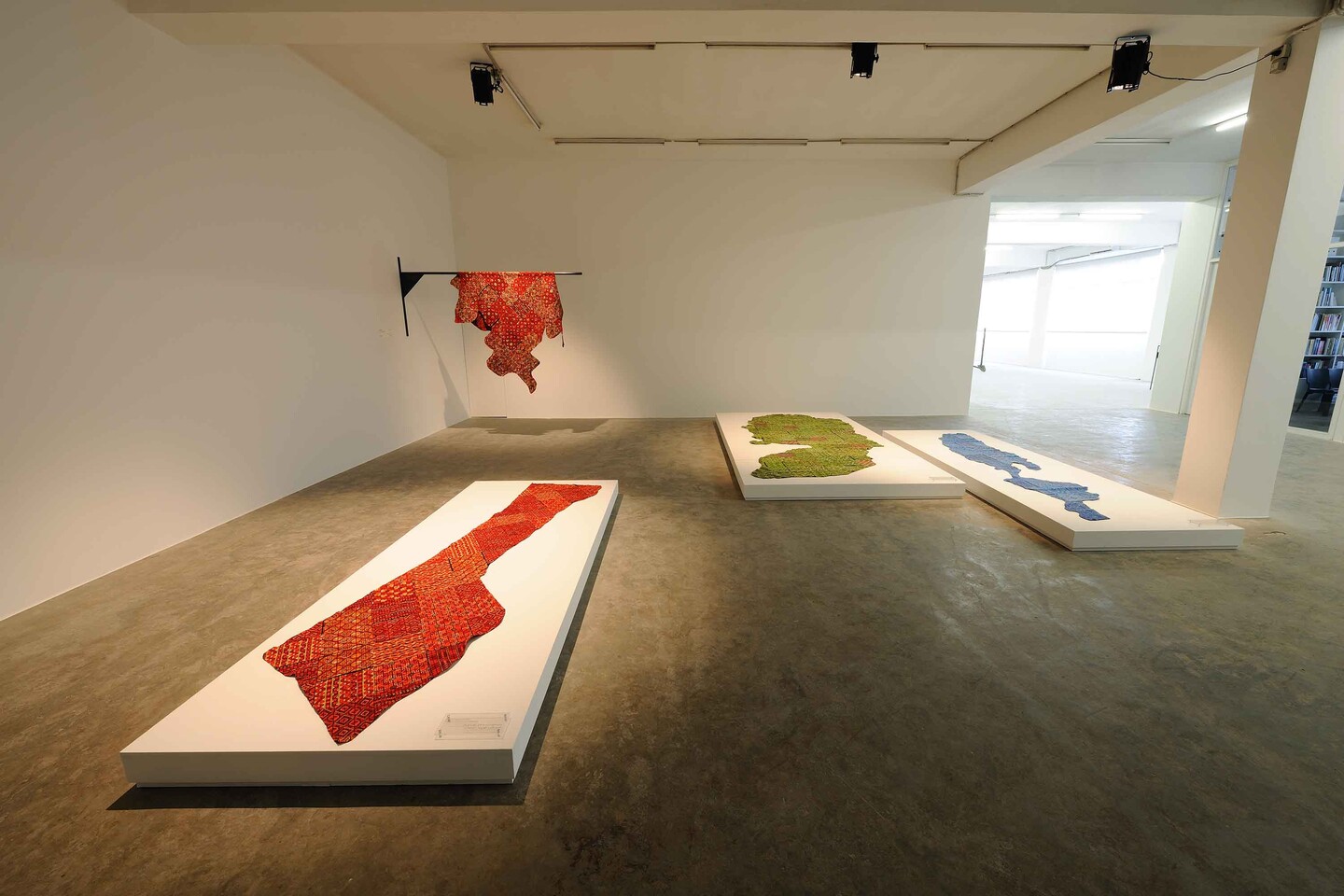
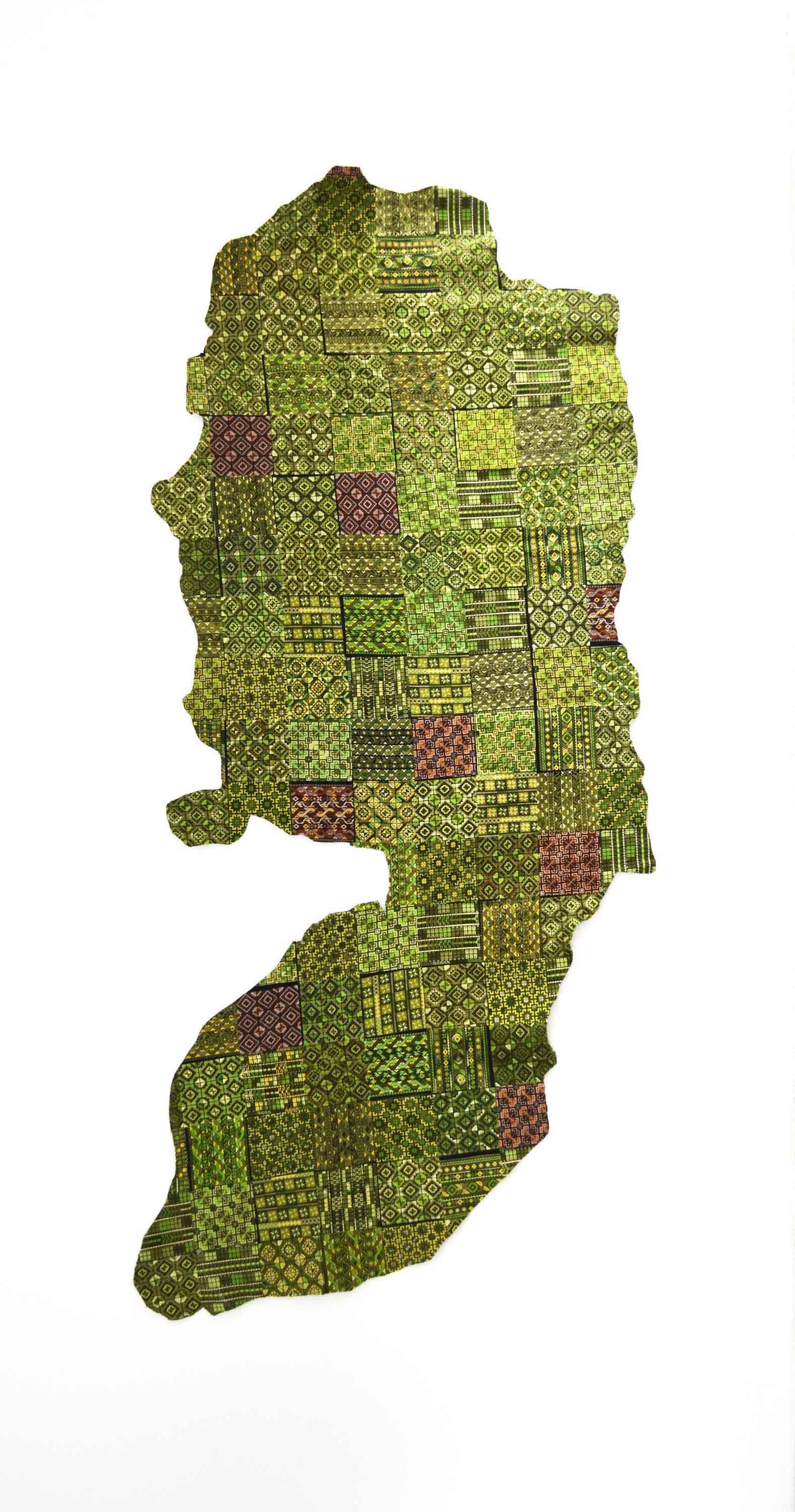
embroidery on fabric, 355 × 160 cm
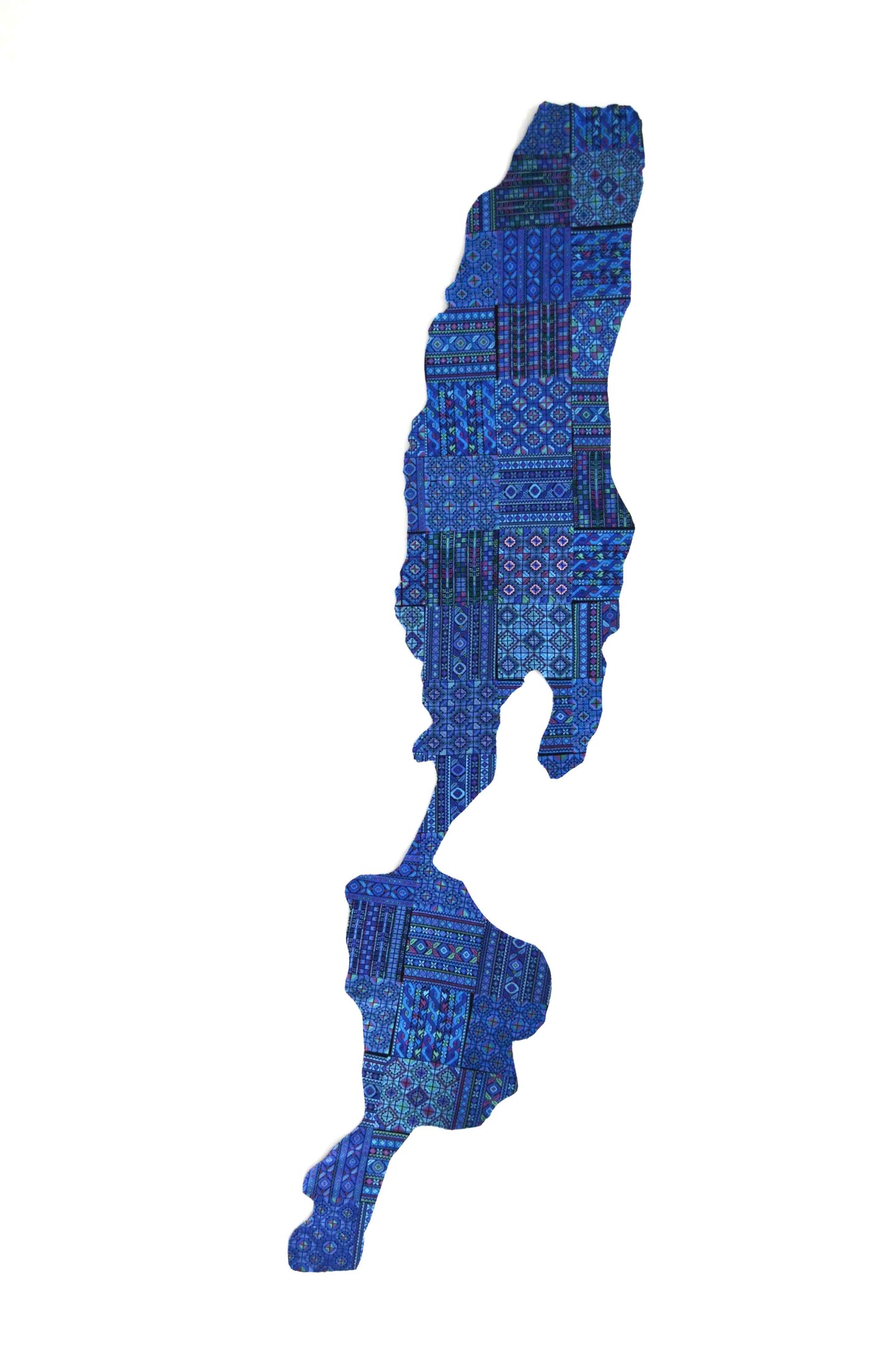
embroidery on fabric, 315 × 60 cm
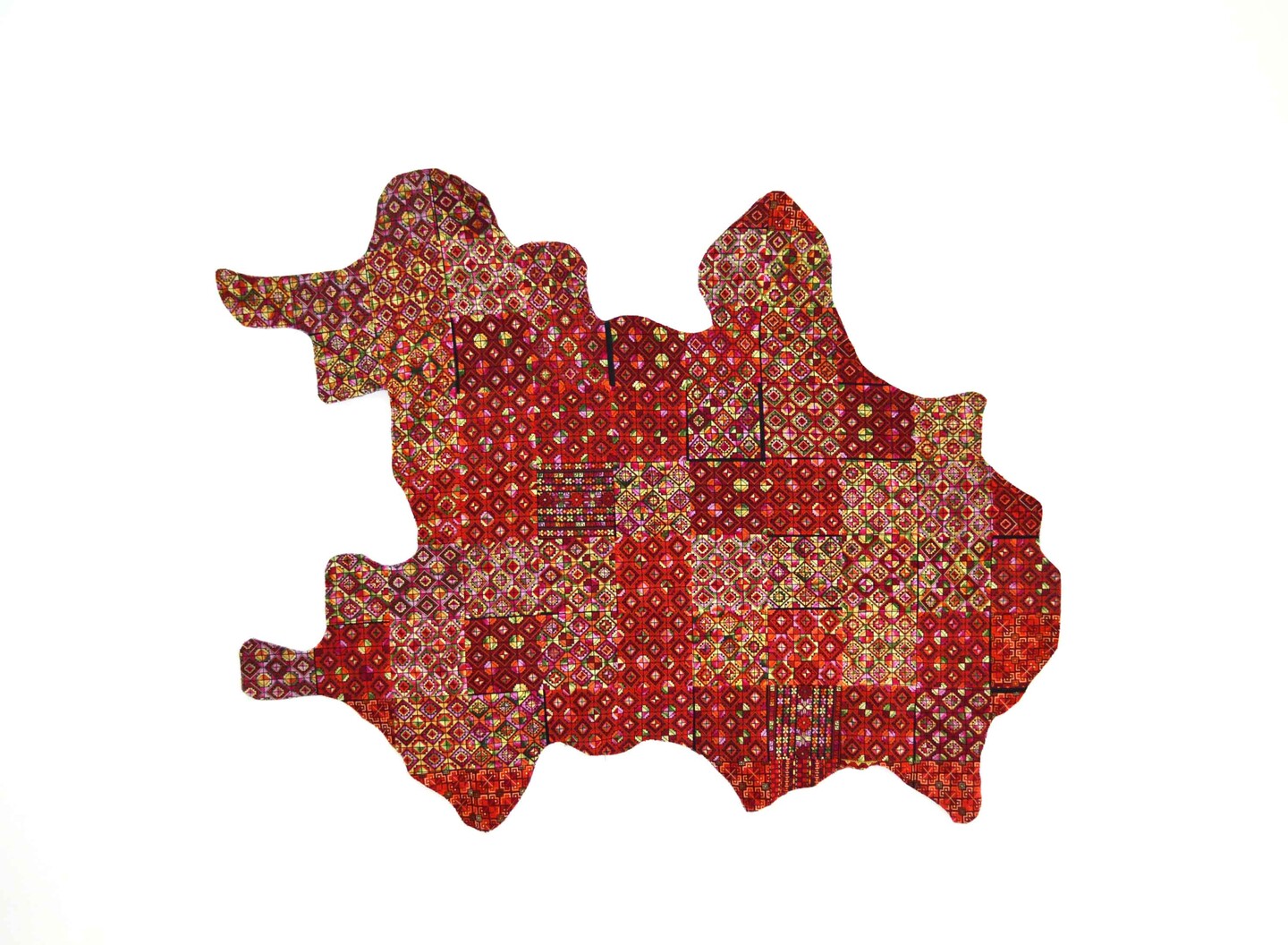
embroidery on fabric, 240 × 240 cm
Through a reappropriation of traditions of western museology, New Sites for the Museum Departments or four places to visit Heaven presents four departments in The Palestinian Museum of Natural History and Humankind, skillfully mapped onto sites that are geographically recognizable, and others that are hypothetical, while placing the subject of the artist himself at the epicenter of his inquiry.
In his recent work, Area C Fields of Gold, Rabah attempts a literal expression of a meditative garden in which visitors are invited to reflect on the nature of botany in Palestine. While in this version of the Botanical Department, the artist juxtaposes new and old works, placing them at the mercy of the present.
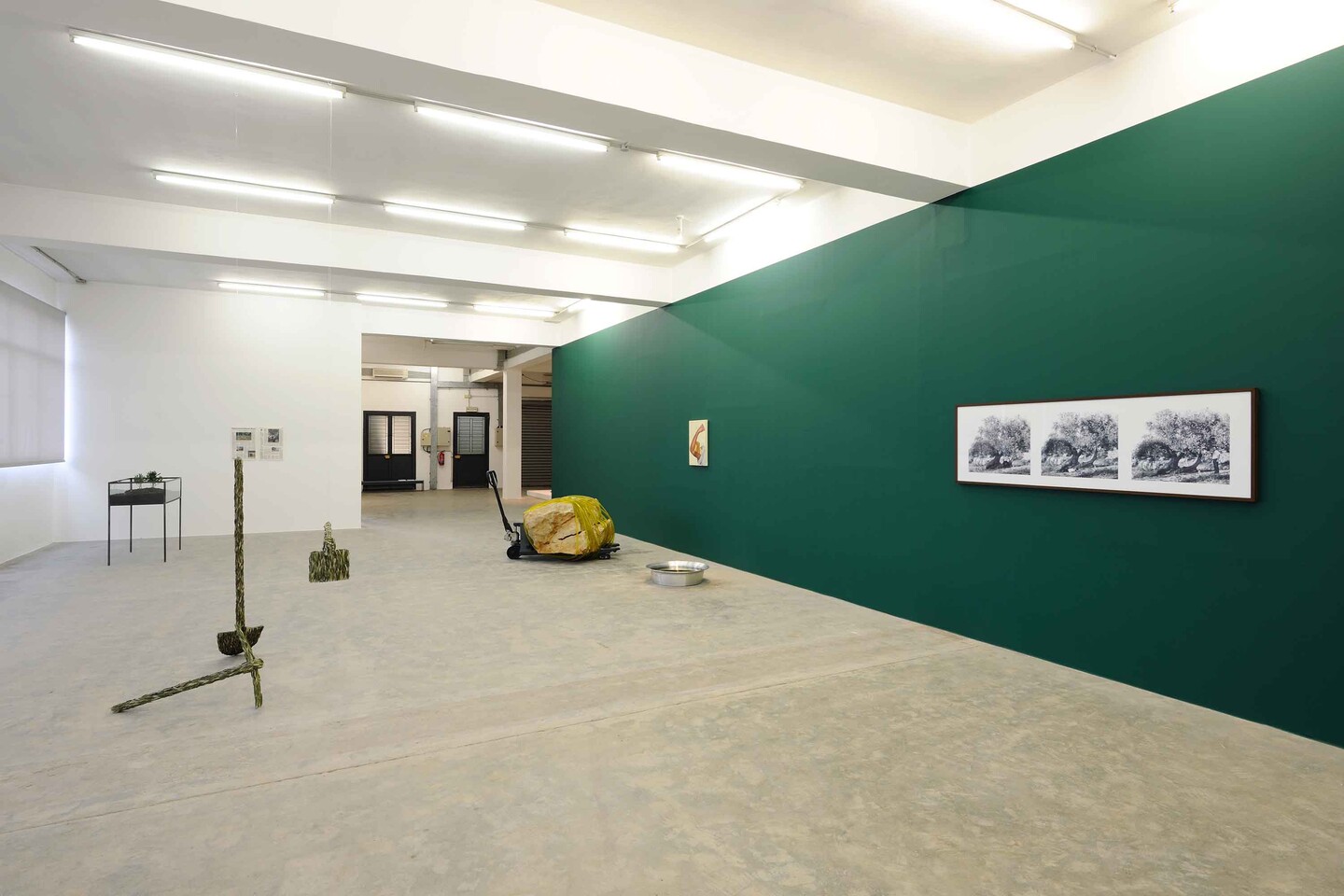
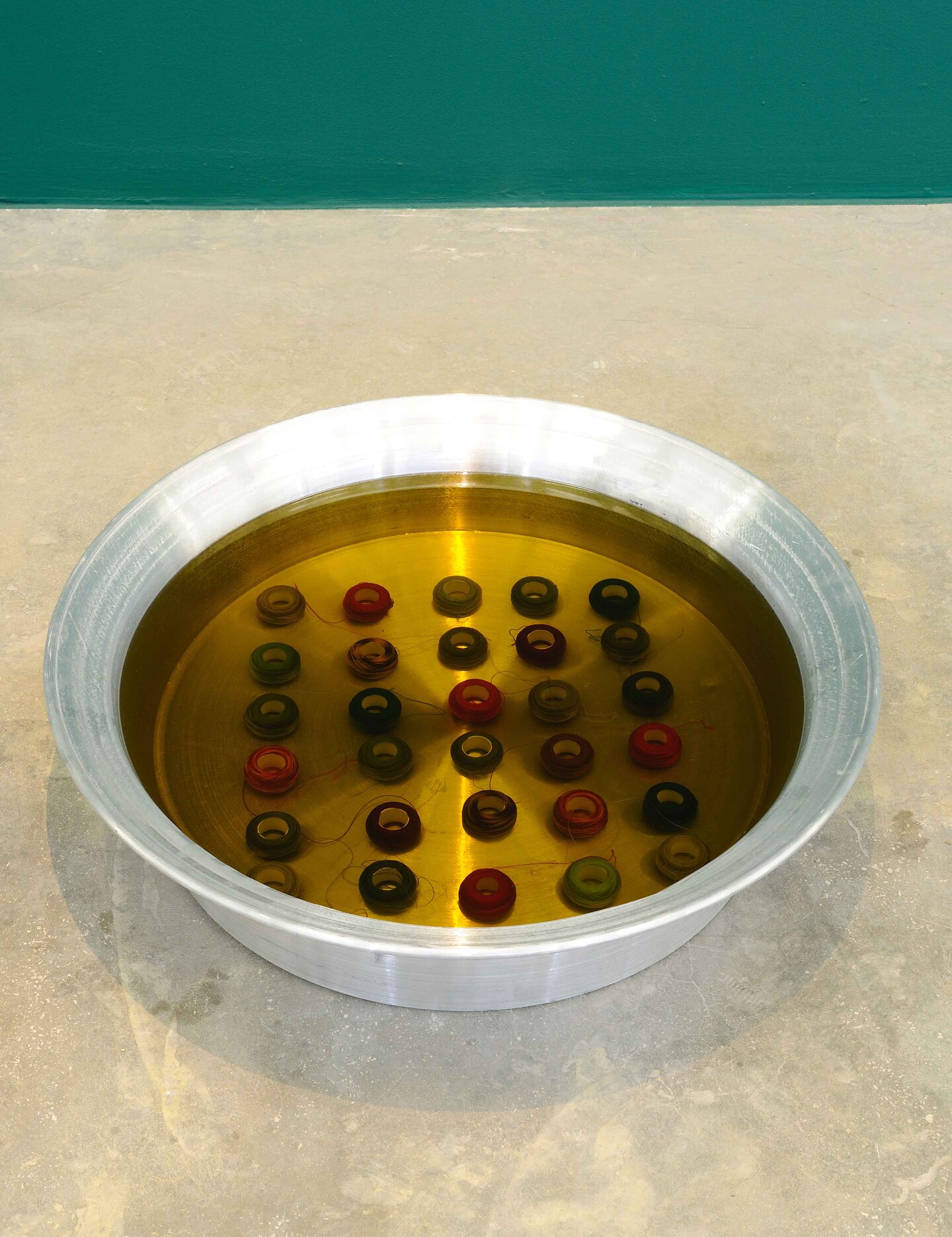
round metal pot, olive oil, embroidery threads, variable dimensions

oil on canvas, 40 × 60 cm
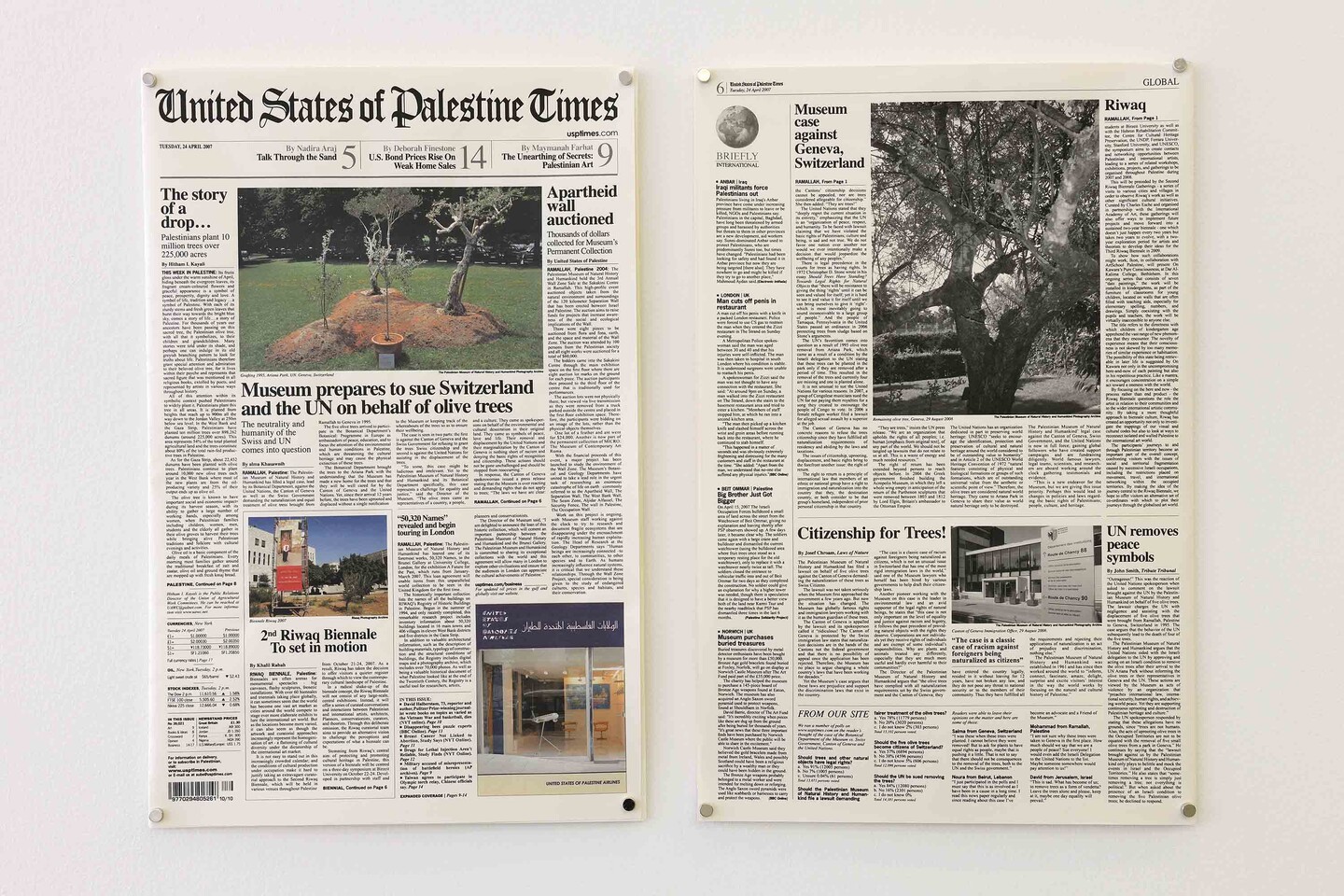
two newspaper pages, 55.8 × 36.4 cm
The combination doesn’t only question our relation to our natural habitat, centered on the emblematic olive tree, but also brings forward a presumed artist’s agency and its relation to politics and to human resilience. Rabah is using the magic of the museum in several of his works, for example
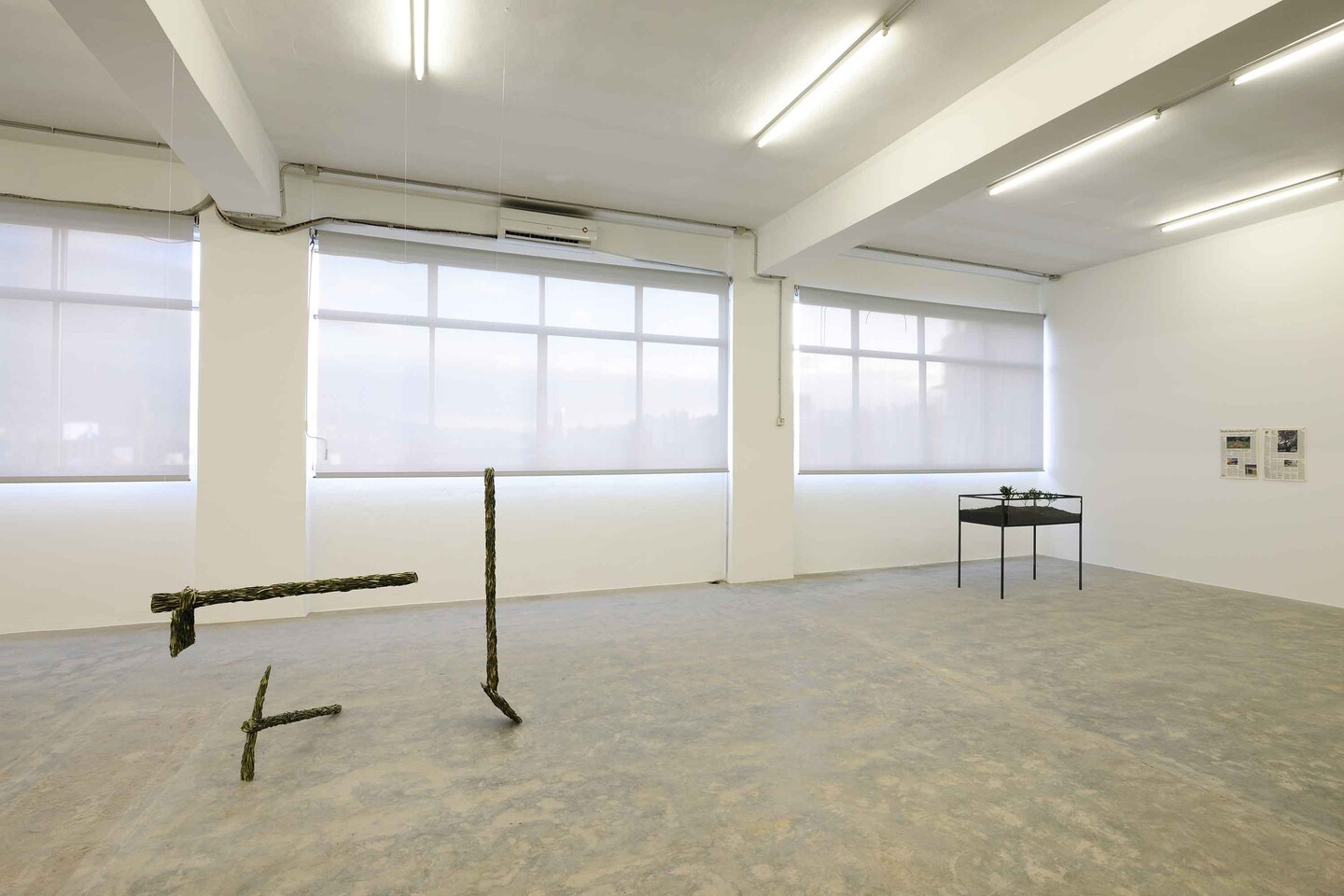
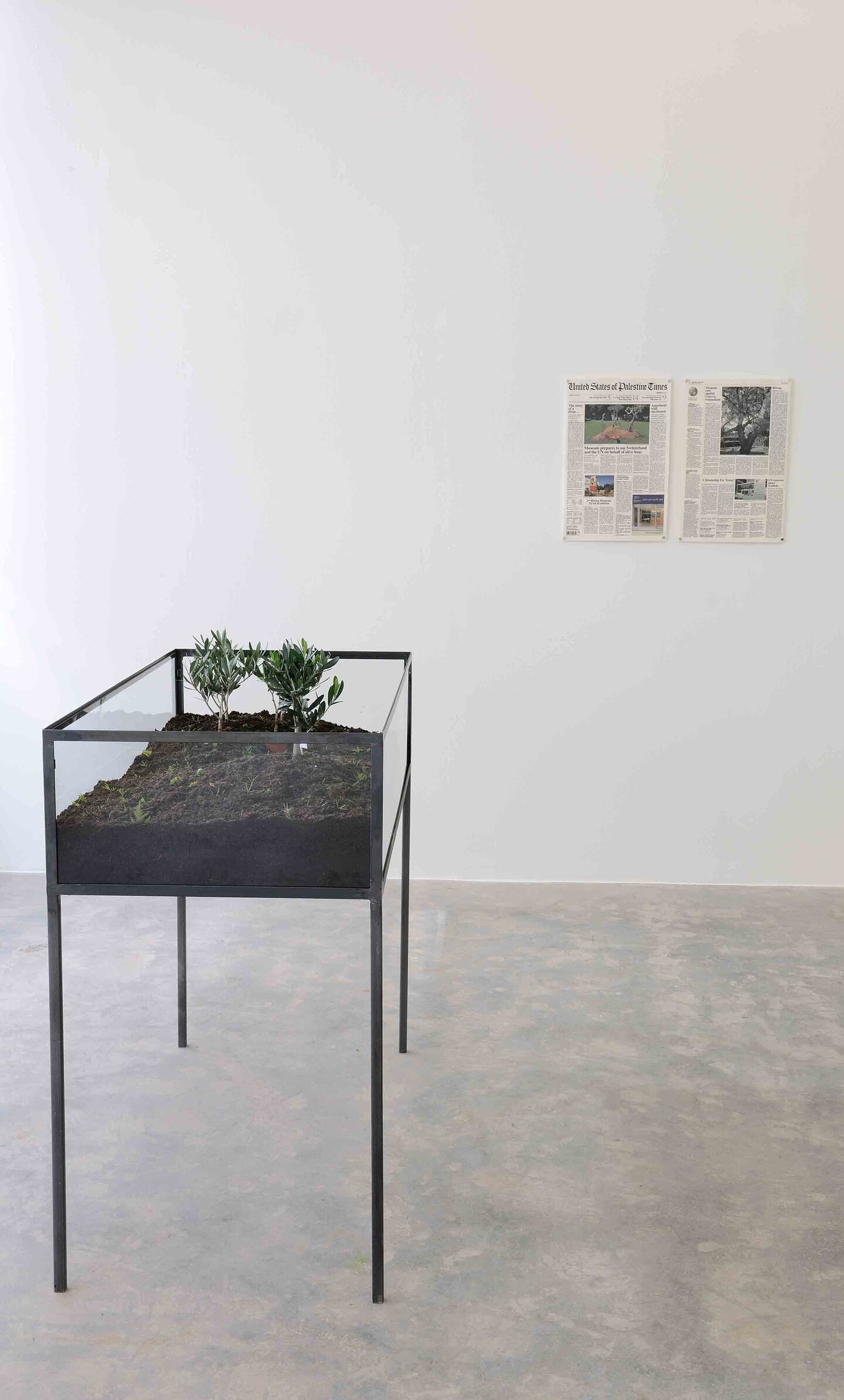
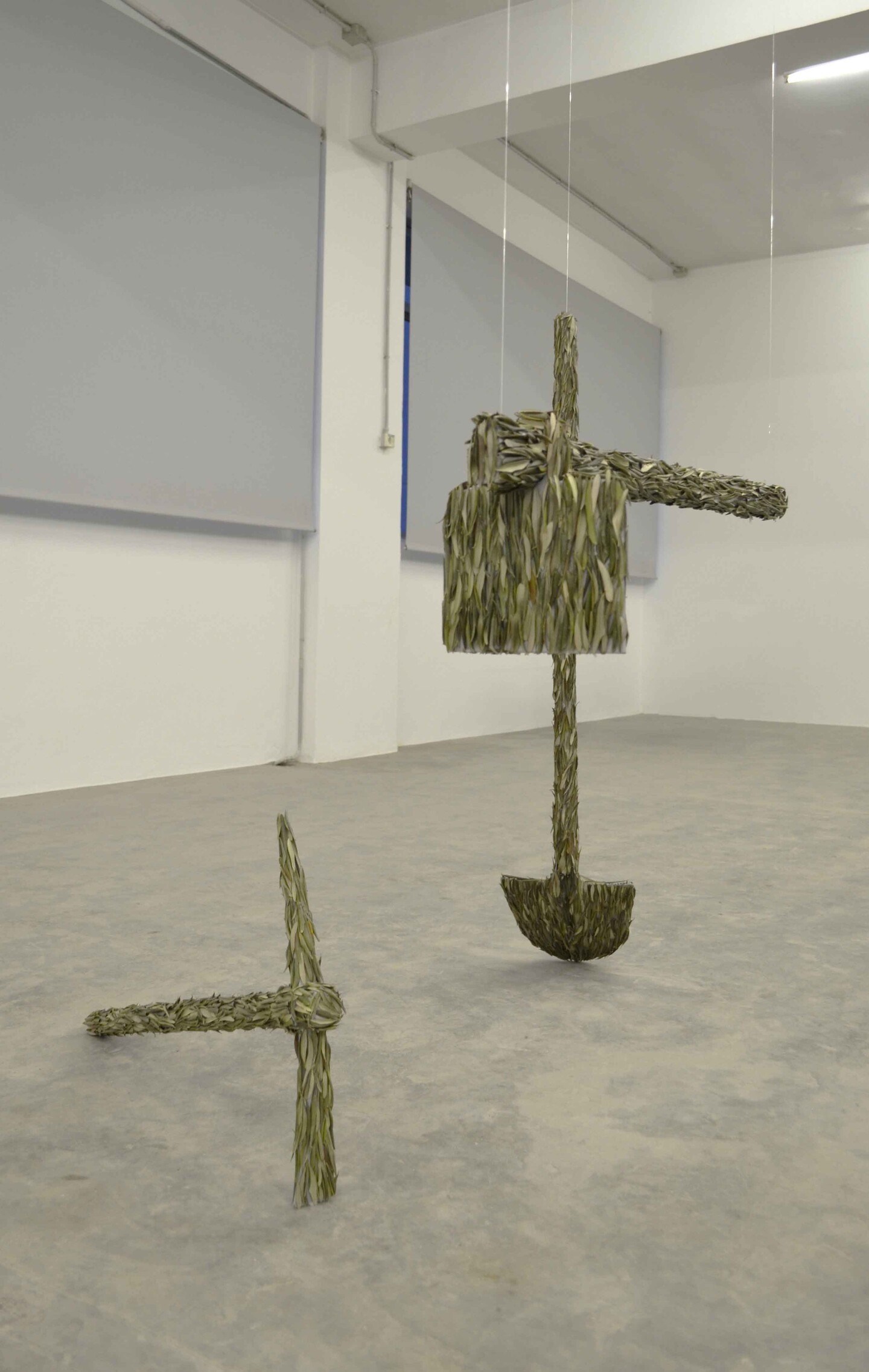
tools, olive tree leaves, variable dimensions

tools, olive tree leaves, variable dimensions
In Vein presents the failure of representing the contemporaneity of his performance from the 90s. Simultaneously, the display rejects representation through record, while aestheticizing his performance, as if it weren’t his but more a product of its time.
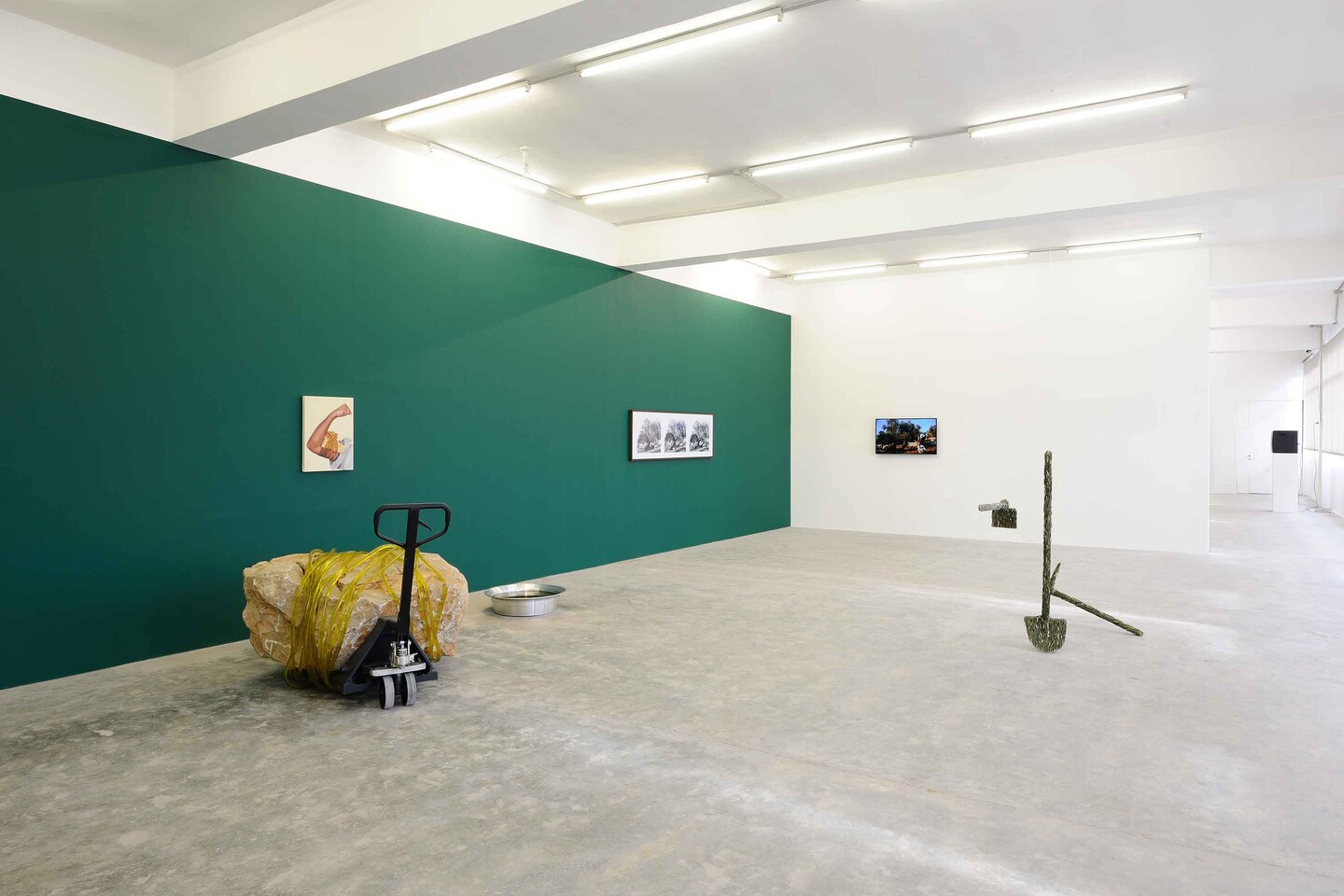
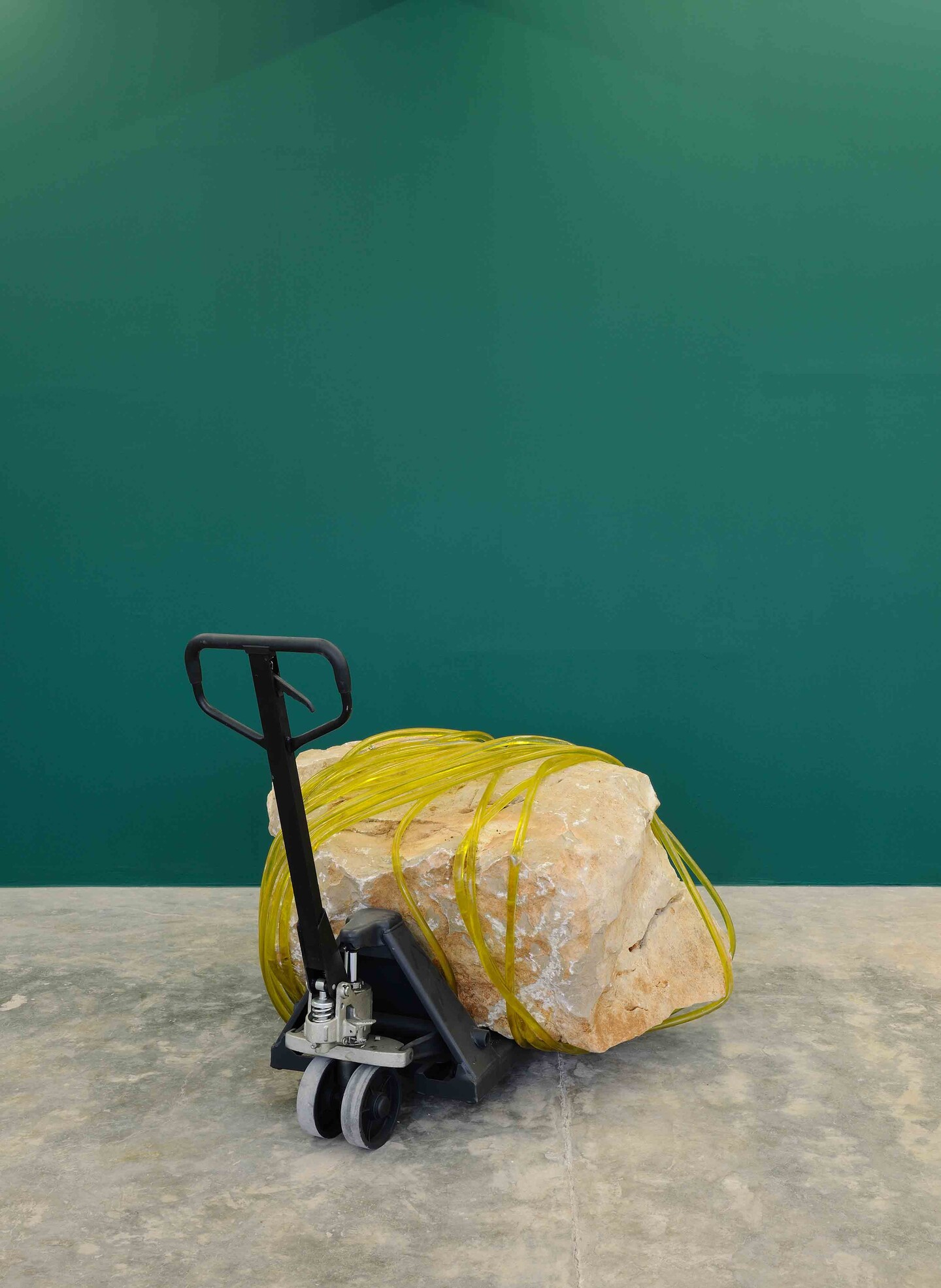
rock, spray-painted hand pallet truck, plastic tube, olive oil, variable dimensions
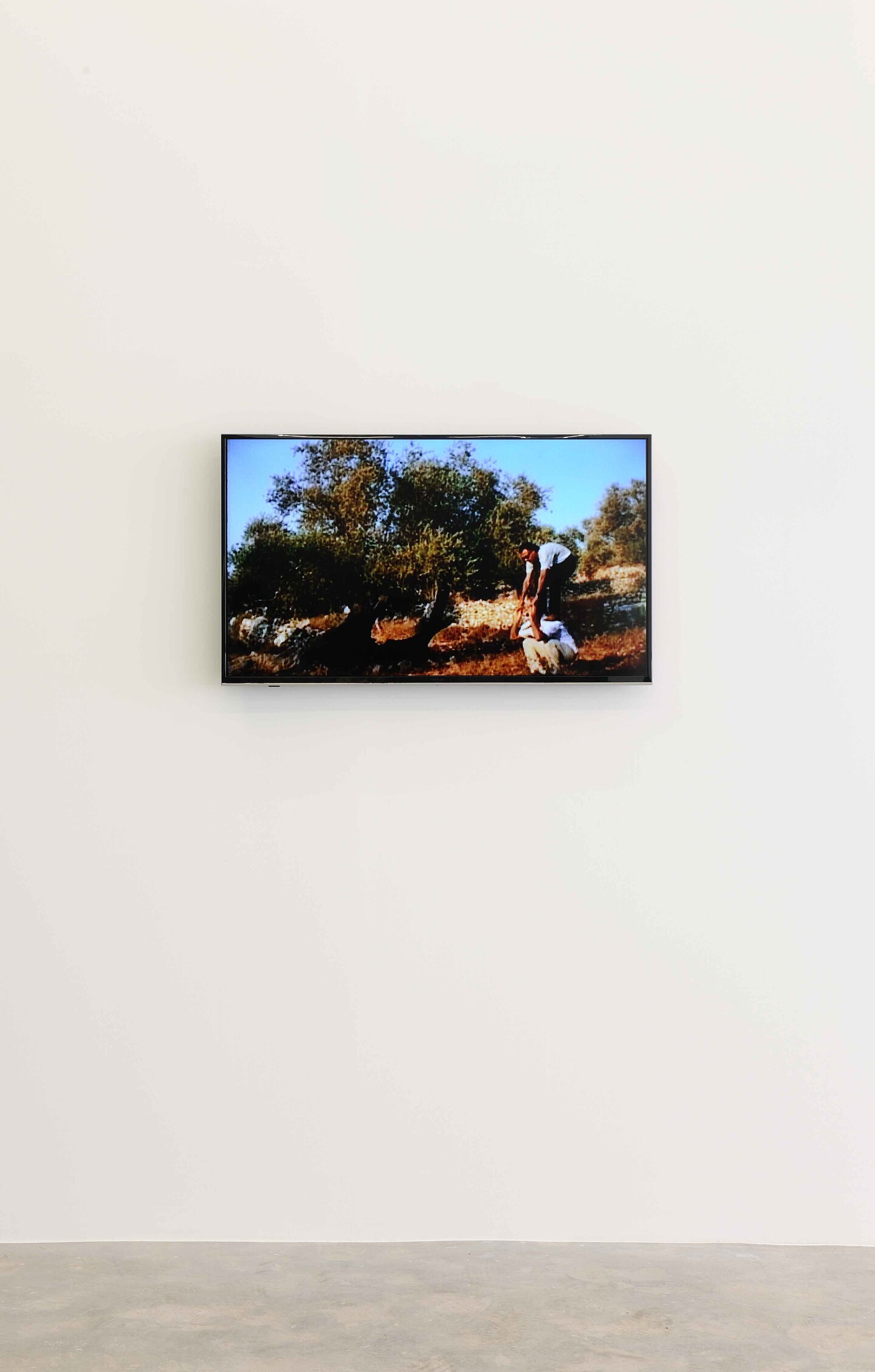
video, color, silent, 1:07 min, loop
The Earth and Solar System Department focuses on visceral forces that mold and shape our world. The Lowest Point on Earth Memorial Park revolves around the origins of things – but also their ultimate demise, raising questions around memory and collective consciousness, and resizing human life within the wider universe. This section uncovers burdened bodies in their most basic, skeletal form crushed by a visually absent weight. Now occupying center stage, these bodies paradoxically become monuments for a collective cognition, commemorating an endangered identity.
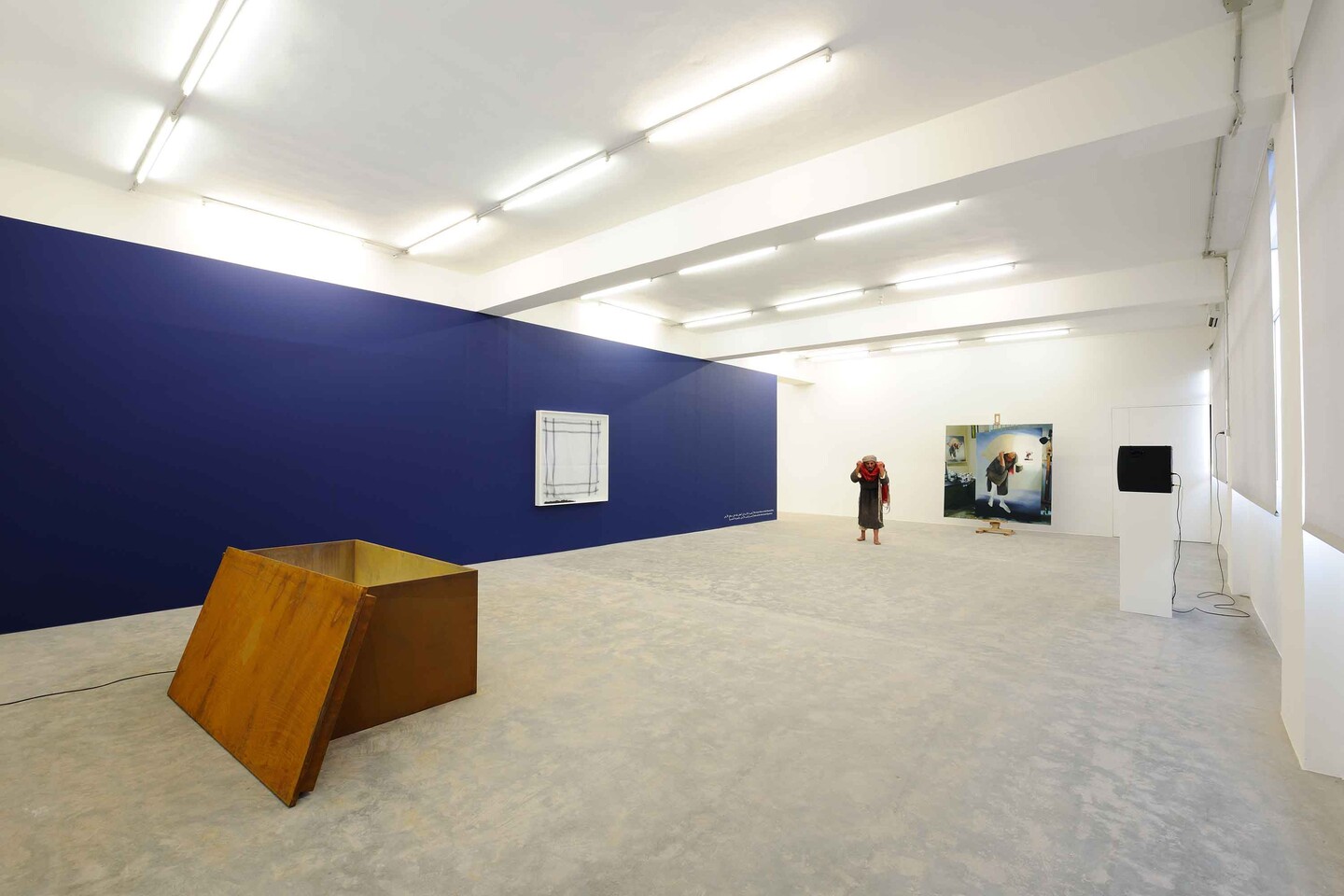
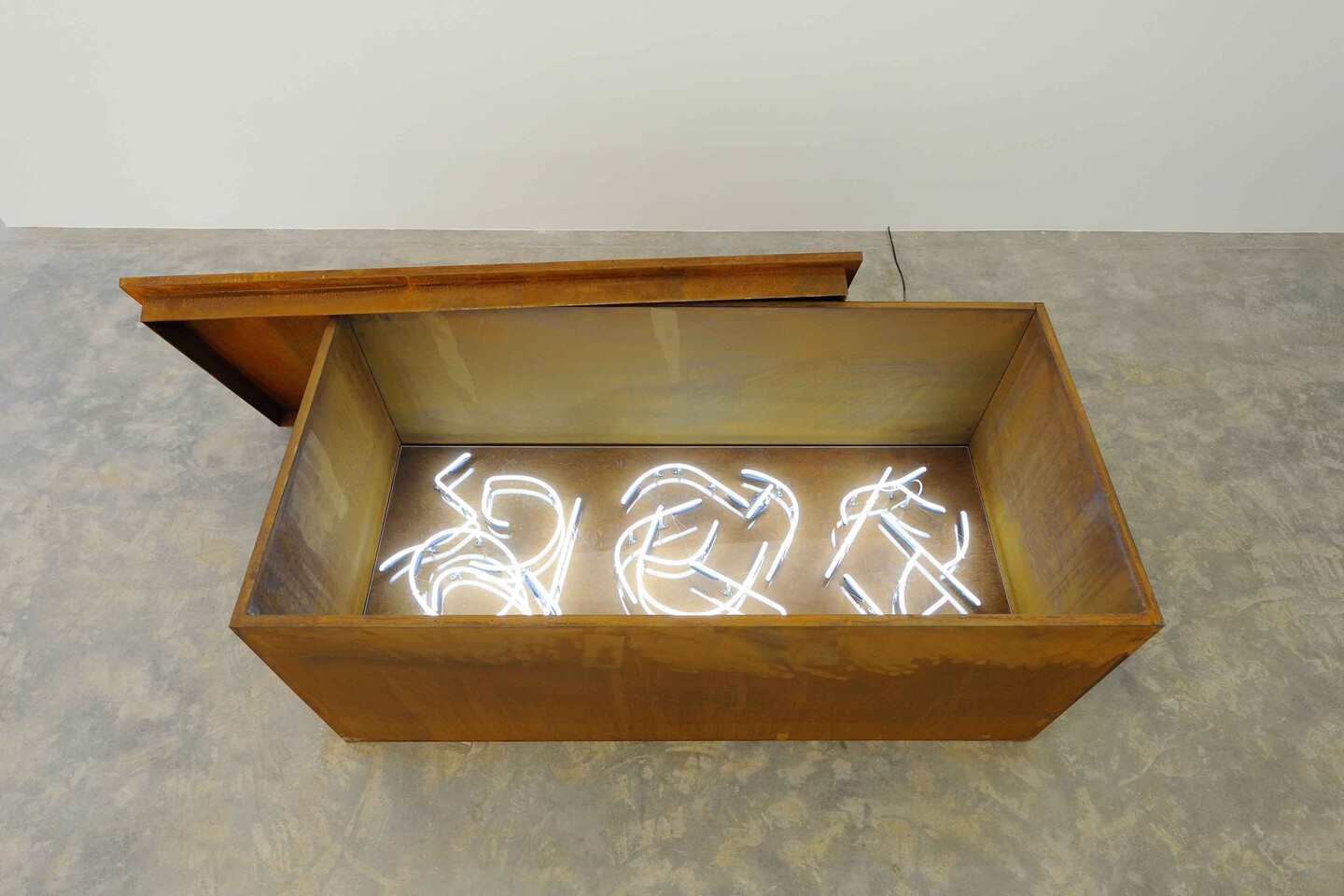
rusted metal, neon, plexiglass, 100 × 200 × 80 cm

video, color, sound, 13:45 min, loop
Rabah re-invents Jamal Al Mahamel, an iconic art work by artist Sleiman Mansour, in such a way as to monumentalize absence in itself.

oil on canvas, easel, 200 × 200 cm

steel, fibreglass, resin, fabric, 160 × 65 × 60 cm
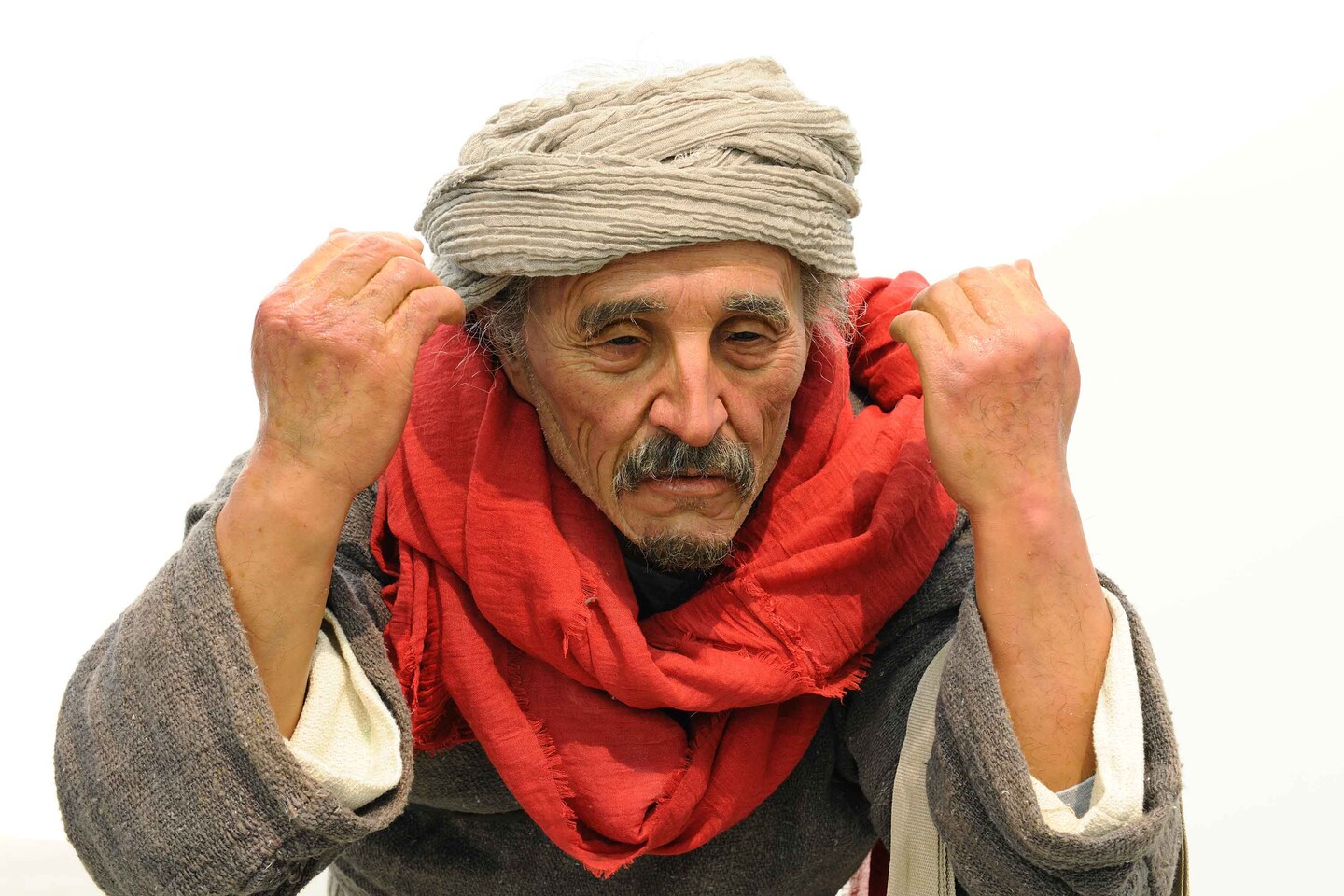
The Geology and Paleontology Department, home to sciences that do not experiment but rather try to understand the whole through the sum of its parts, presents an apt opportunity to examine elements and details. This is where Gaza Zoo Sculpture Garden can be seen, as a fragment of a whole in constant struggle to fit with one another. The sculpture garden is where mankind has been reduced to bare life, and one could only document the passing of time.
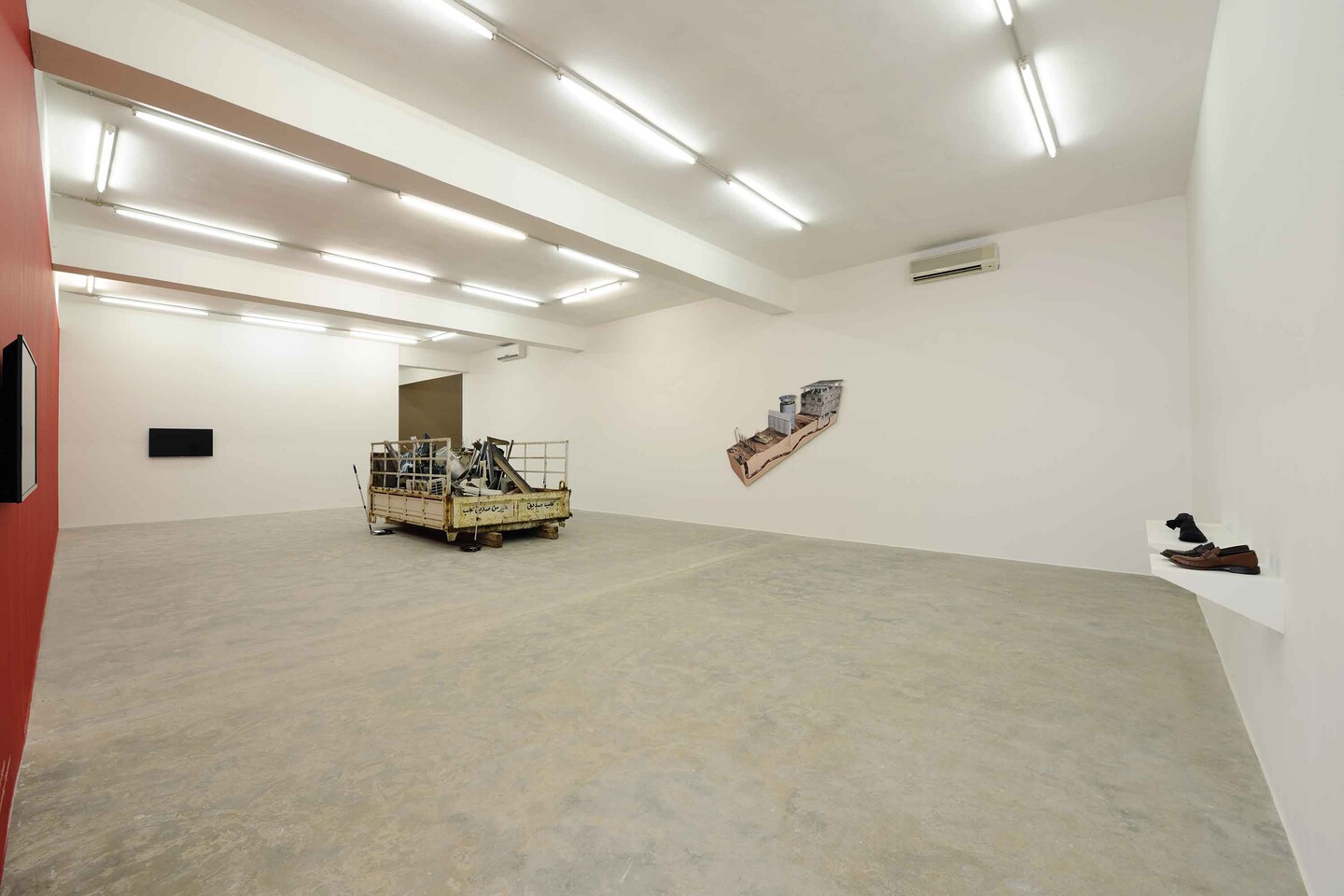
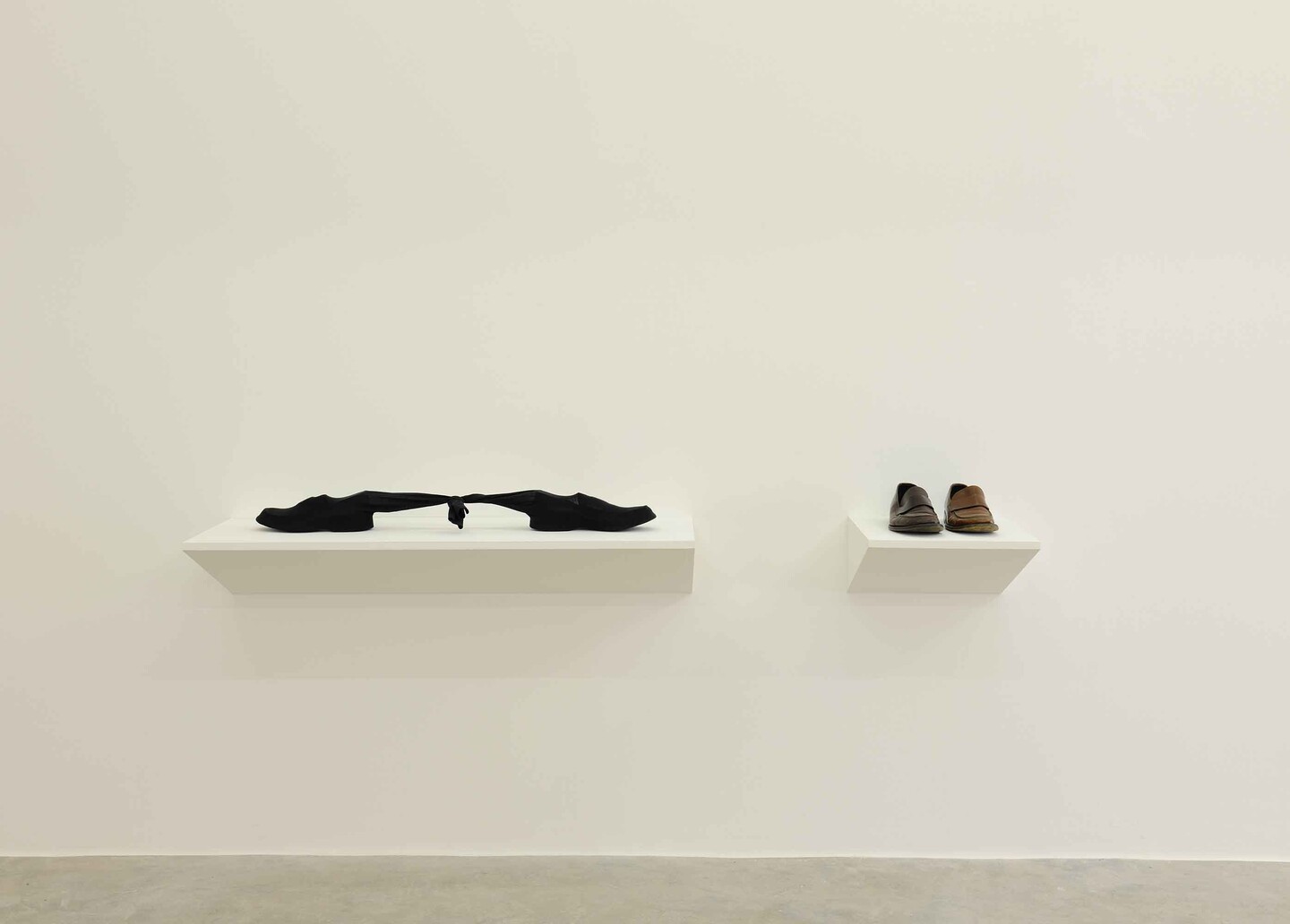
two leather shoes, size 41 and size 43, socks, 99 × 10 × 11 cm
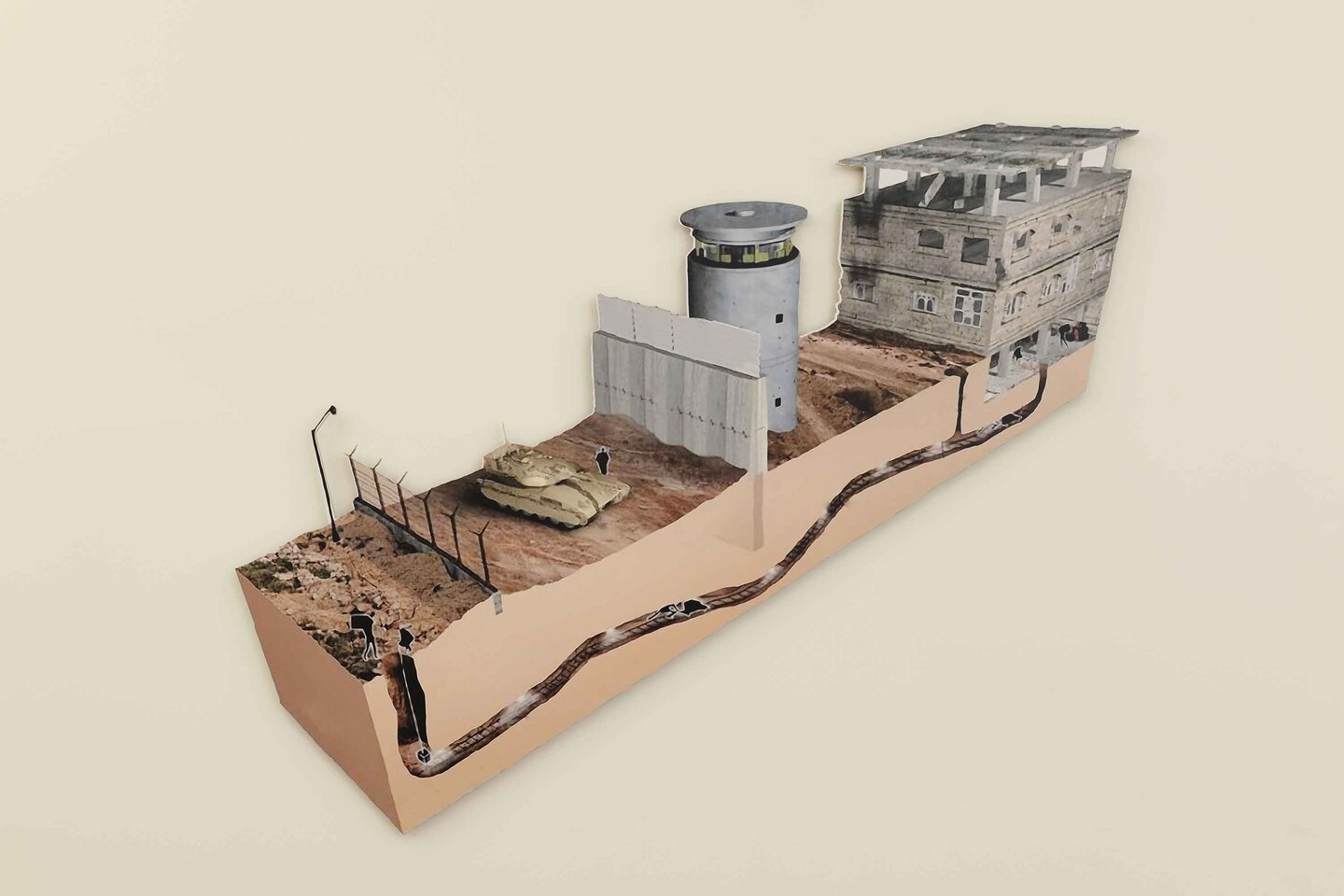
digtal print mounted on plywood, 120 × 240 cm
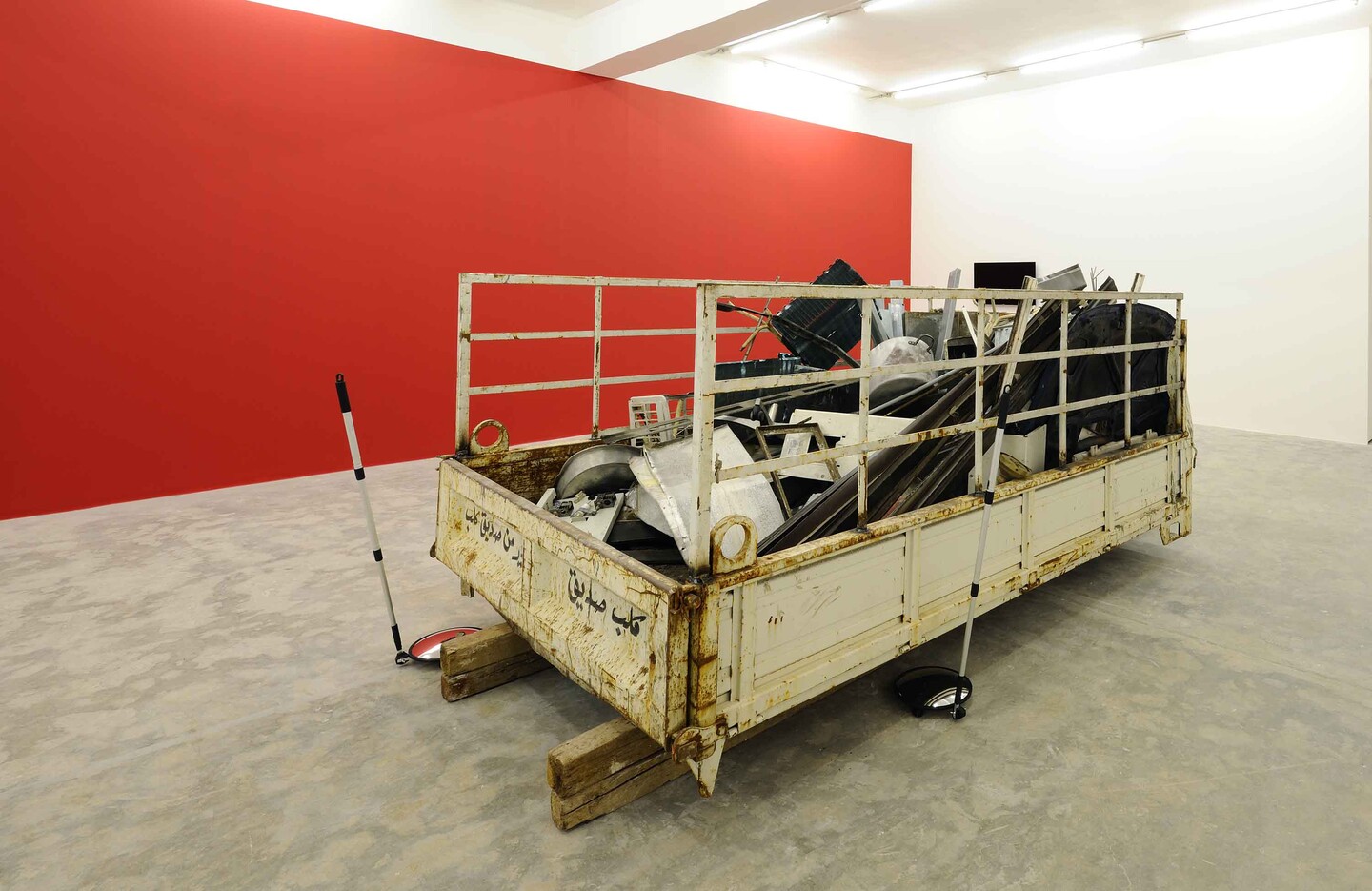
metal, wood, truck flatbed, surveillance mirrors, 193 × 155 × 300 cm
The Museum’s archive involves a new site for the Anthropology Department that is placed in a São Paolo favela dubbed Acampamento Vila Nova Palestina (New Palestine’s Village Camp).
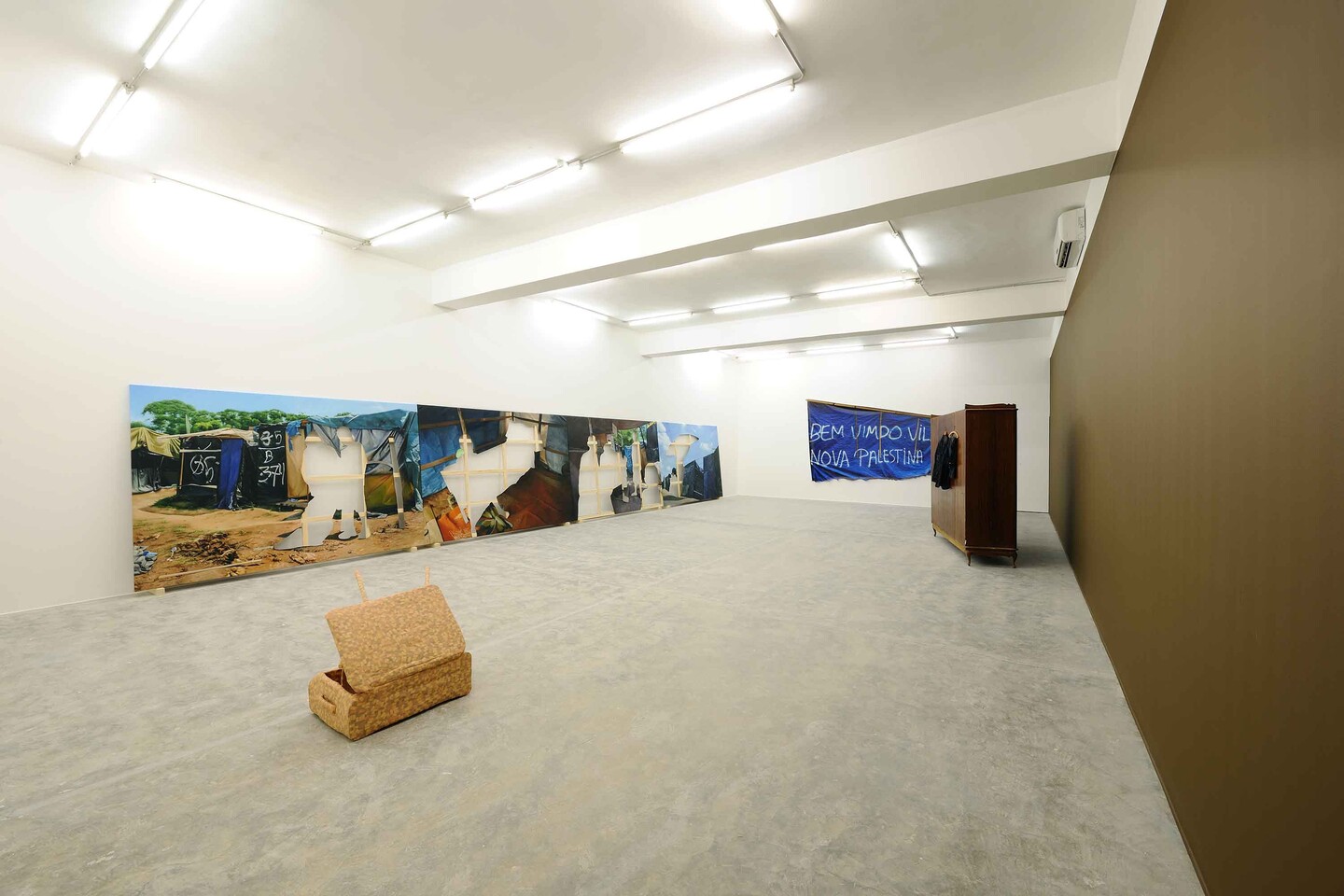
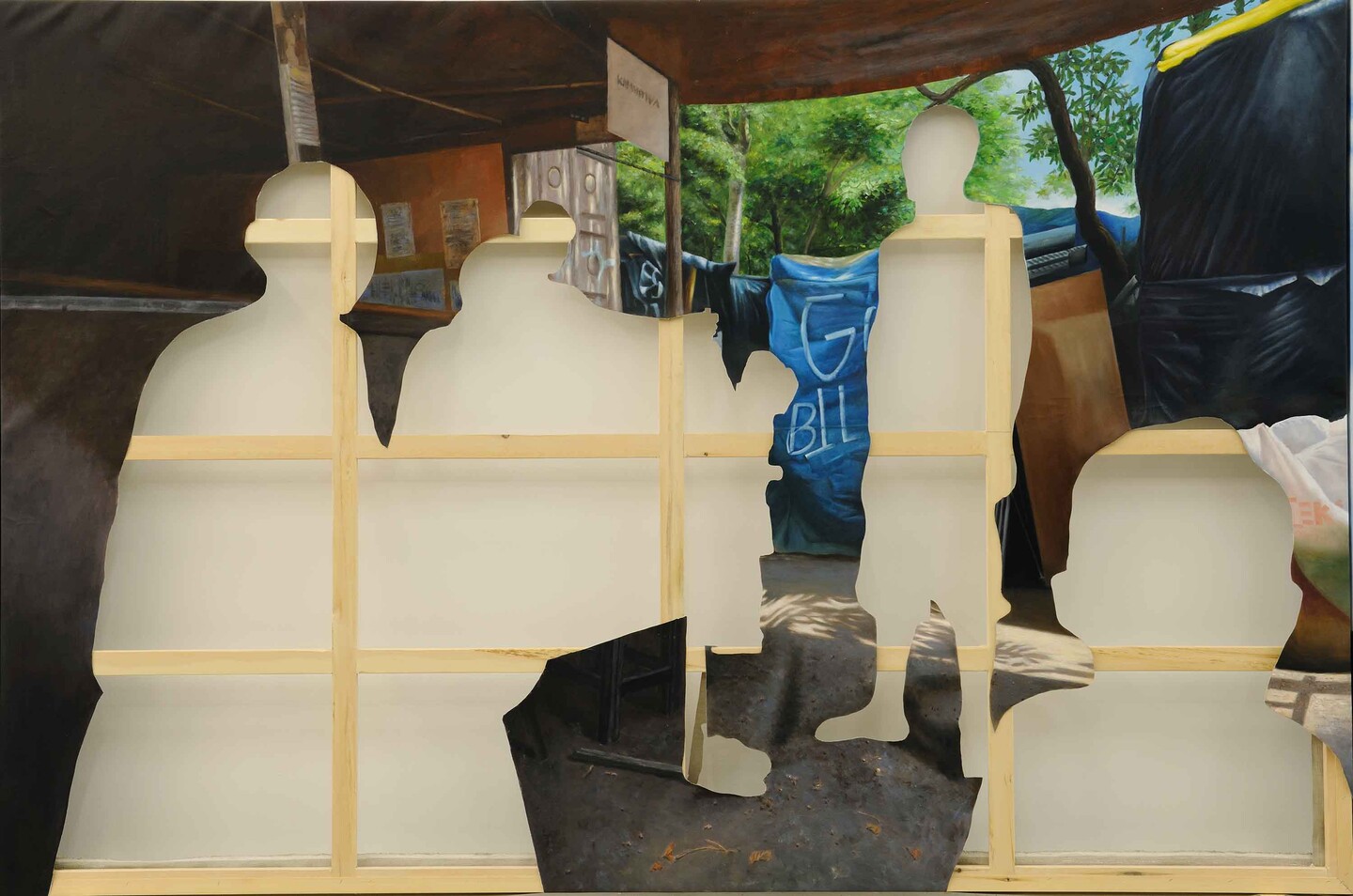
4 oil on canvas, 1200 × 800 cm all, 200 × 300 cm each
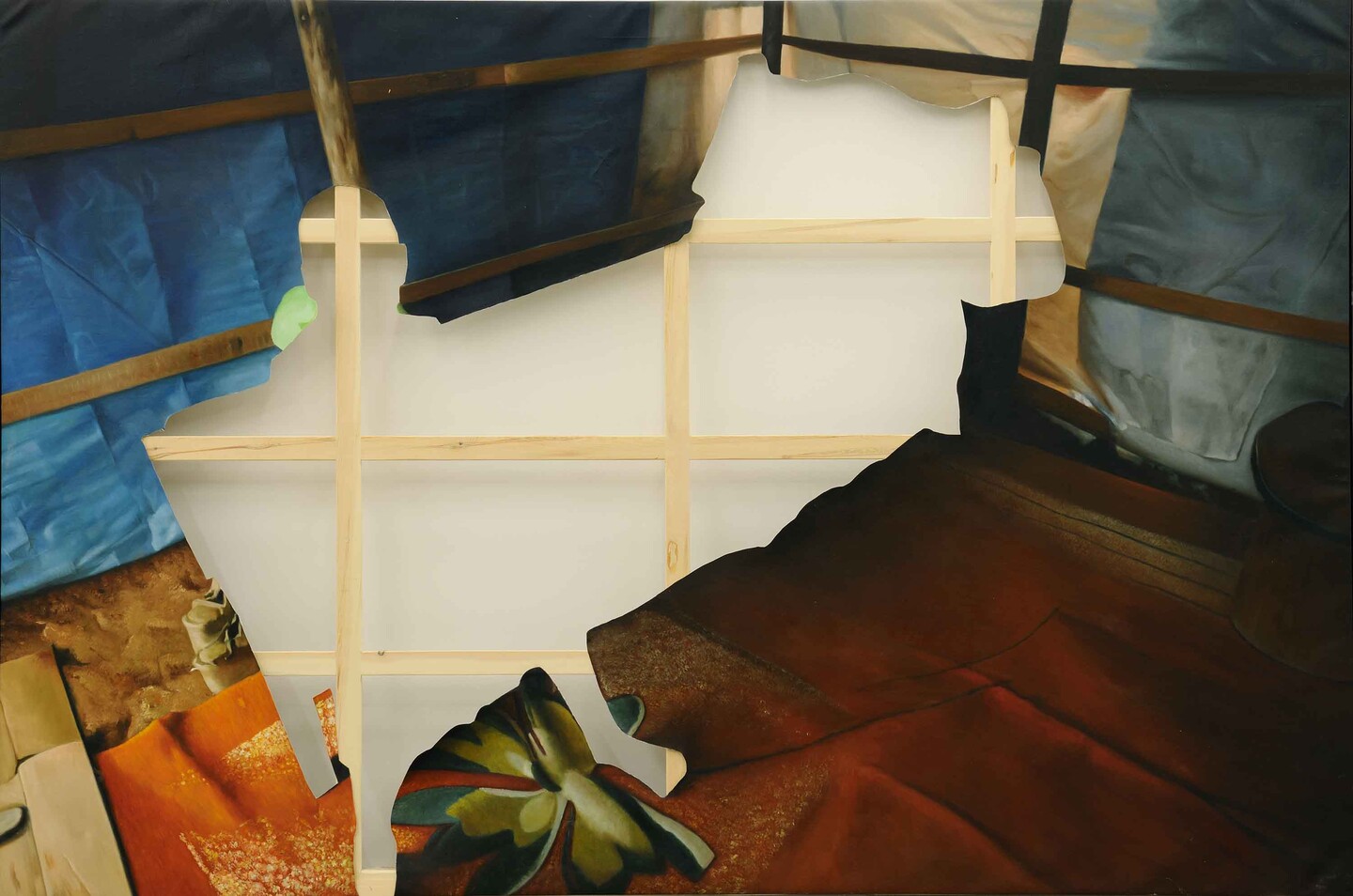
oil on canvas, 1200 × 800 cm all, 200 × 300 cm each
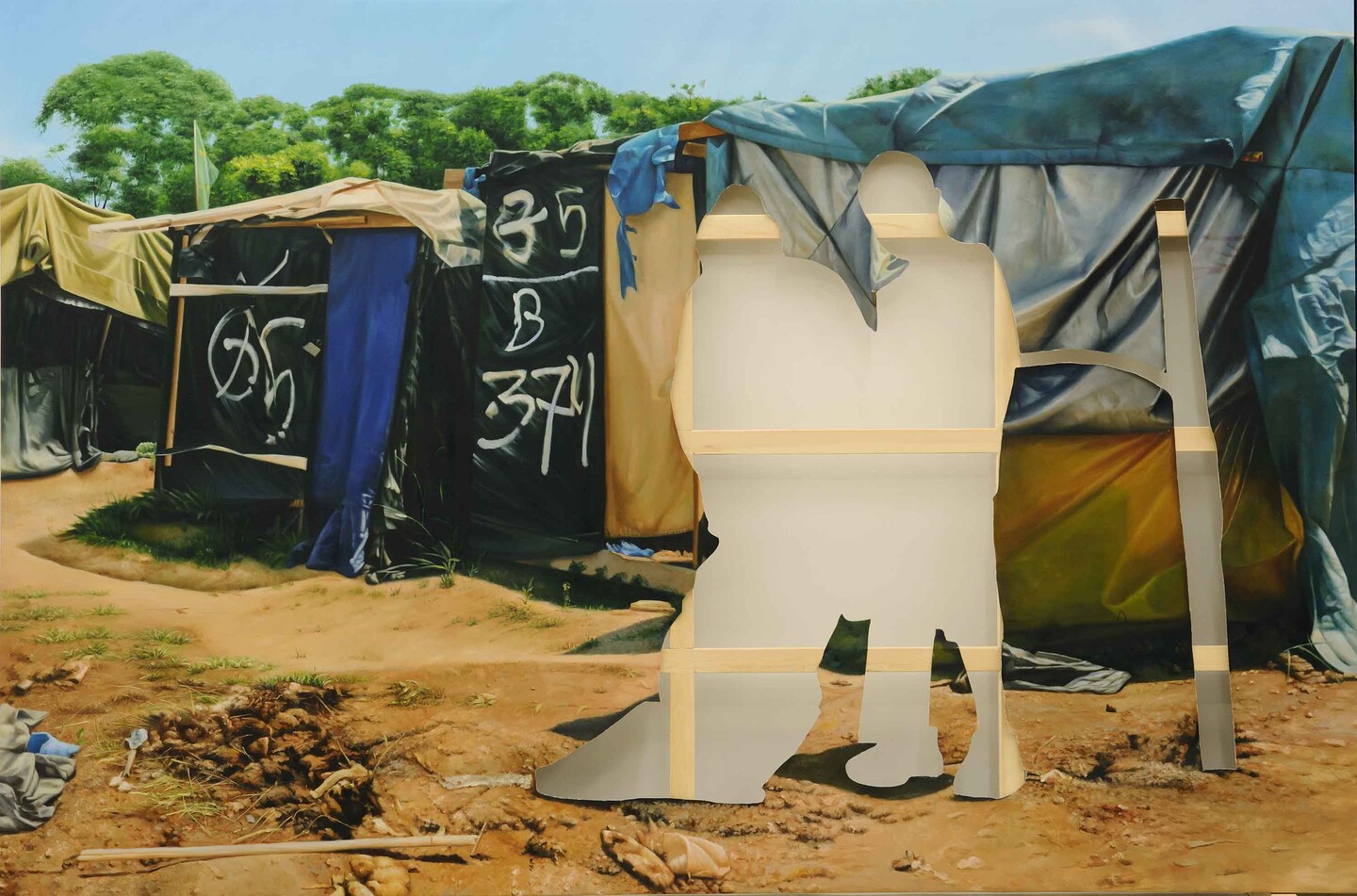
oil on canvas, 1200 × 800 cm all, 200 × 300 cm each
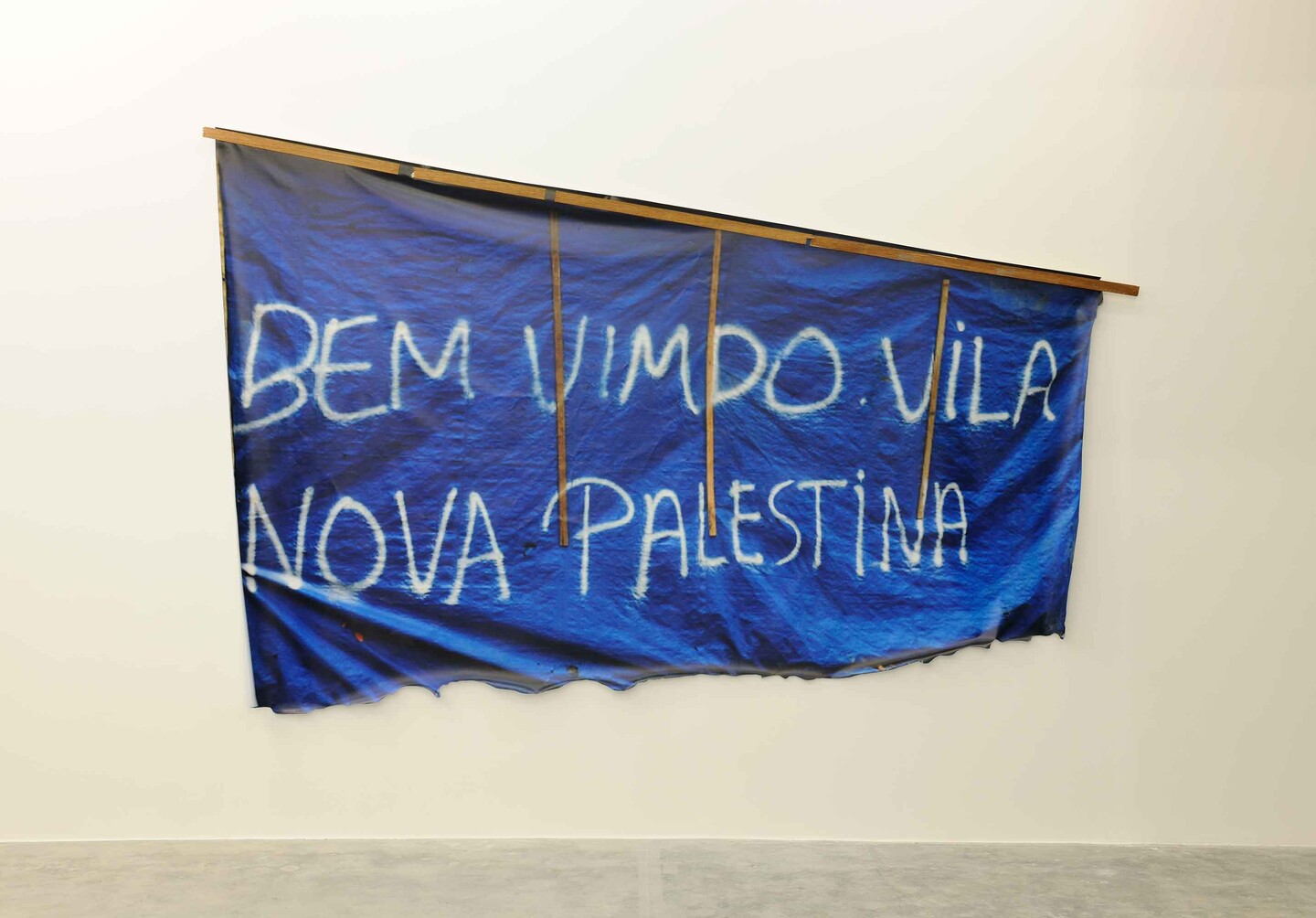
oil on canvas, 1200 × 800 cm all, 200 × 300 cm each
In this precarious settlement, the human figure is absent, yet intriguingly visible; and the Palestinian camp becomes a global condition rather than a local predicament. Flayed from the burden of its bodies, the liberated skin here breathes with resolution.
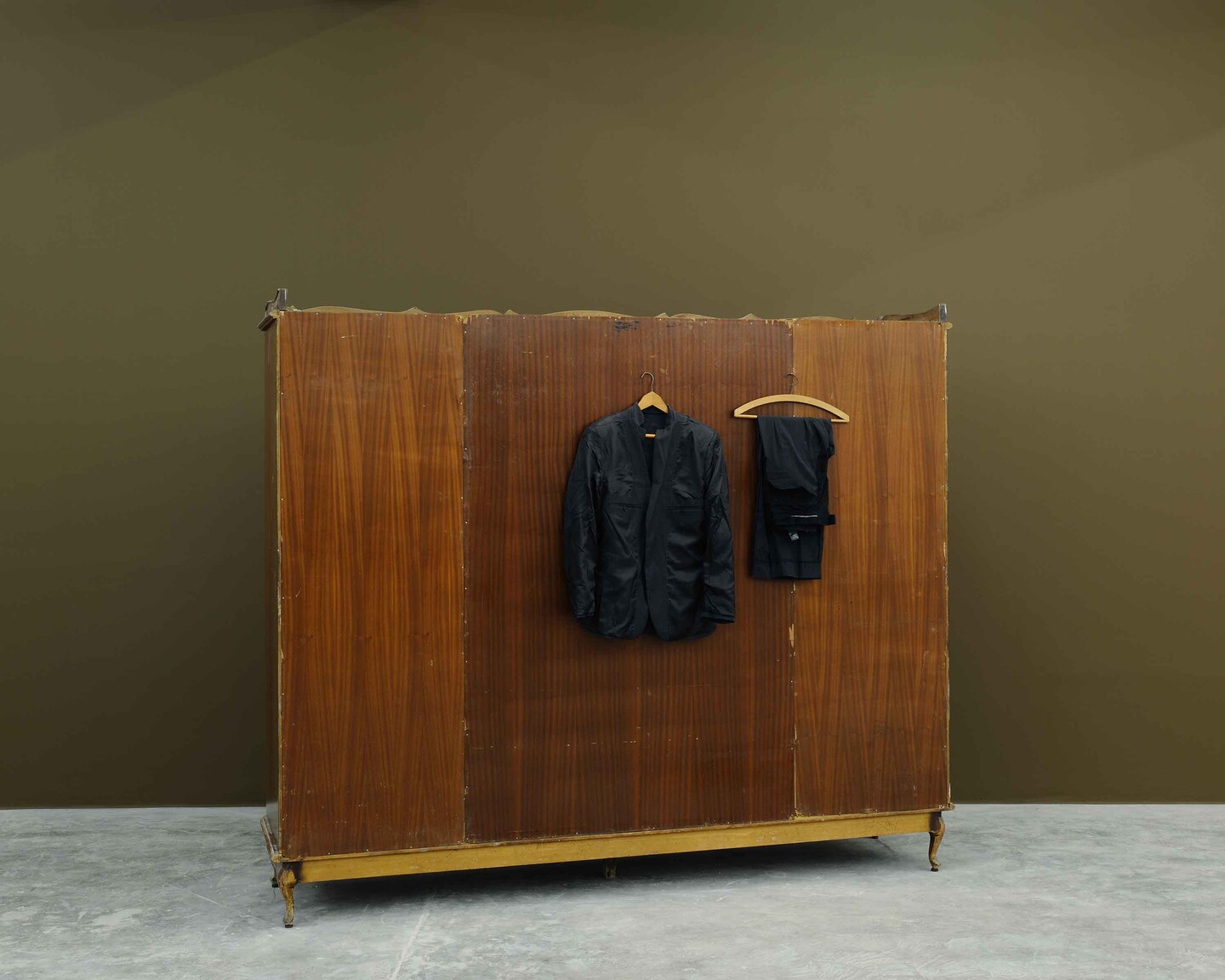
wood, fabric, 200 × 240 × 60 cm
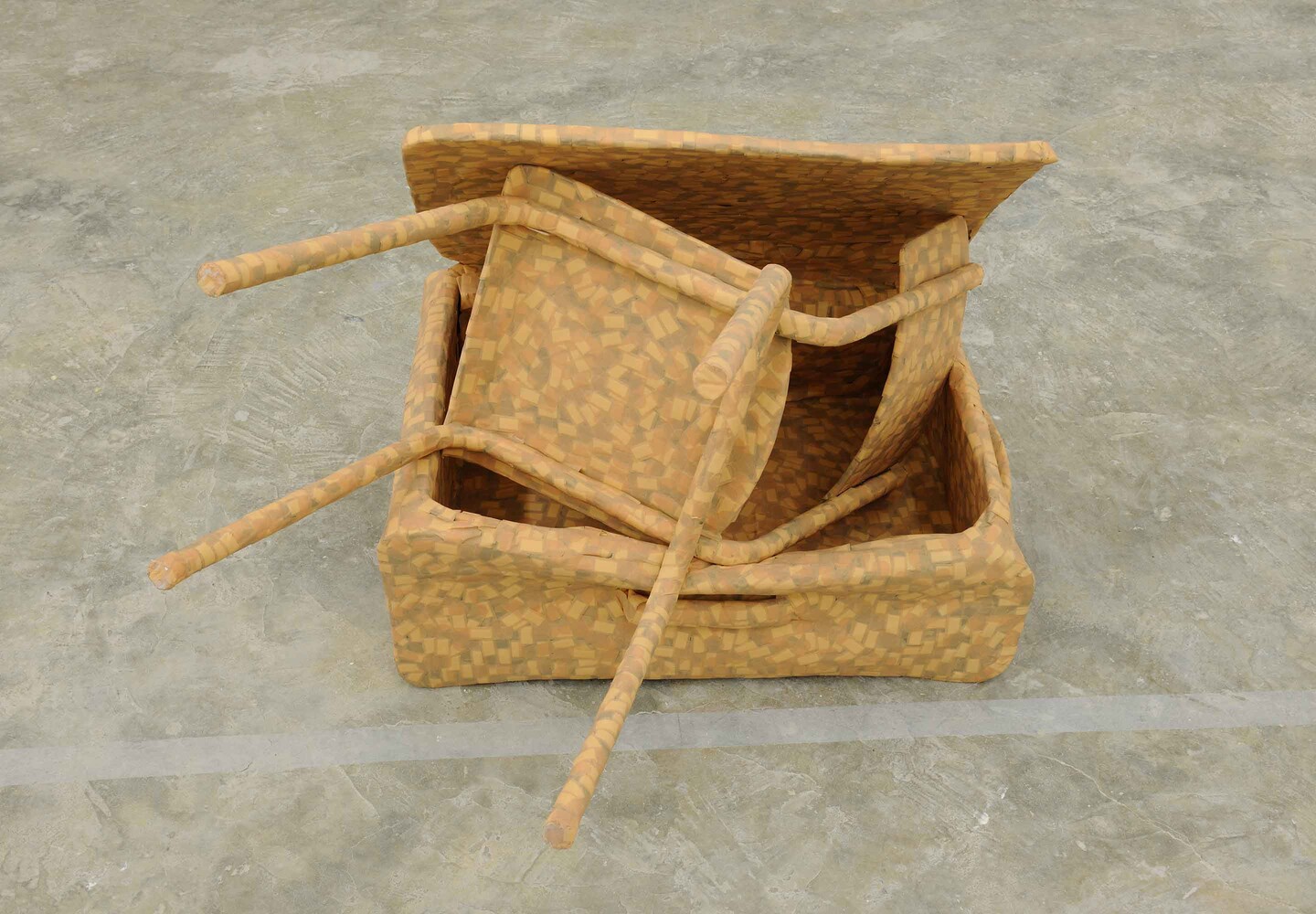
suitcase, chair, medical plaster, 60 × 70 × 60 cm
As Rabah continues The Palestinian Museum of Natural History and Humankind’s quest to collect and preserve fragments of Palestine, the conceptual institution reinvents itself at each presentation. Each department becomes part of a wider body that solidifies over time into a new anatomy for a museum.